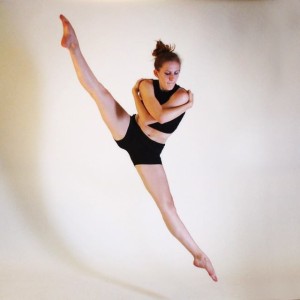Carolyn Braganca- LIT ’15
Currently, Quinn Czejkowski is enrolled in Dr. Li’s Introduction to Professional Writing and Rhetoric. As a senior dance and arts administration double major, she provides a different and interesting perspective on how some basic PWR principles can be applied in settings and contexts other than writing. Below is an interview with Quinn, exploring how her brief PWR experience has affected her outlook on dance.
Carolyn: When choreographing, how much do you consider your audience?
Quinn: Personally, I am not very aware of my audience when I create dance. Of course this is not an absolute thing and is not often a strongly conscious choice, but I tend to create dances that I don’t attach a lot of meaning to. I am more interested to hear peoples’ interpretations than I am to see if I can communicate a specific message with the movement I create. The audience is not consciously why I create pieces, but I know that they are subconsciously affecting certain things that I do. I think that when a piece of choreography tackles some sort of societal issue or observation, knowing the viewing audience is very important. The desire is never to offend, but if anything, to make people think in a new or different way. But controversiality is at times necessary, and so efforts to not offend may not be successful. One of the things that I love about art is that it is open to calling people out, challenging systems, pointing out problematic things, and that can never and never should be taken away.
How do you consider your audience?
When I do think about my audience, I tend to think of them in two ways – the dancers and the non-dancers. It is a divide that is critical because I hope to please both, but I know that in attempting to do that, I may appear to “talk down” to the dancers in the audience but also over shoot my non-dancing audience. For me, there is always a concern that dancers who watch it can see right through the structure I have created and may have a value judgment based on that.
Another interesting part of dance and the choreographic process is that it is important to remember that you, as the creator, have seen the piece tens or hundreds of times more than your audience has or will. Their experience with a piece is rarely extended for more than a few days, even if it is longer than the singular performance that they get to see. This is something unique to dance because it is a form bound by space and time. It does not continue to exist like a painting does, but it is fleeting. Videos don’t do justice to live performance, and so dance grapples with the challenge of some sort of immediacy for its audience. What the audience is left with is not something tangible, and so impressions have to be significant but not overdone.
Has your experience in your PWR class changed how you consider the rhetorical situation of your dancing?
This class has made me more aware of the interaction that I have with my audience, planned or unplanned, conscious or unconscious. I am more conscious of the disparity that exists within my audience and therefore more active in trying to temper things for both sets of eyes. Though rhetoric (in terms of specific end results) doesn’t come directly into my process, as I don’t often try to communicate a specific message with my choreography, rhetoric as a structural idea is very applicable. In the same way that a story needs a beginning, middle, and end; an argument needs an opening, body, and conclusion; a dance needs to start, continue, and finish. The structure of anything is arguably infinitely variable, but art and dance are different in that a piece could not follow the logical chronology of time, or be abstract and be successful. Whereas, a professionally written document is written with a purpose in mind and it’s success is evaluated based on its achievement of the purpose or failure.


 Follow
Follow